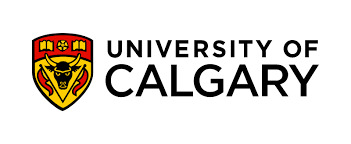Project Category: Geomatics
Join our Presentation
About our Project
Broad acre farming is the practice of cultivating high quantity, low value crops over large open fields. The crops used in broad acre farming are low profit, which causes a tight profit margin and means that farmers must make the most out of their land. Typical operations for Broad acre require farmers to make consecutive passes across their field. Previous tracks must be followed closely to limit waste of waste of resources and increase time efficiency. Historically, this was done using a trained eye as skilled farmers would do their best to stay parallel to their previous passes. In operations such as seeding or spraying, it may be very difficult to see where you have and haven’t been and this often results in over or under coverage of the field.
Precision agriculture uses modern GNSS technology to help farmers know where they are on their fields and retain higher profits. However, raw GNSS observations are subject to errors that can cause across track drifts and positional jumps, reducing effectiveness. Therefore it’s necessary to assess the observations for their relative pass-to-pass accuracy, detect position jumps and perform corrections as needed. The goal for this project was to develop two software suites to produce simulation data and perform error detection.
Meet our Team Members




Details About our Design
WHAT IS PRECISION AGRICULTURE AND BROADACRE FARMING?
Precision agriculture is the general term for the use of positioning software, hardware, or a combination of both, in agriculture practices to improve the efficiency of the production process. Precision agriculture can save time, money, seed, or a combination of all three to help producers achieve higher yields faster or at less cost.
Broadacre farming is a term used to describe large area, low profit crop production of common oilseeds, grain, grasses and beans. Tractors and equipment make passes through crops to perform operations such as spraying, seeding or harvesting. Precision agriculture in broadacre farming requires much lower absolute precision than say the production of vegetables or spices but relative accuracy is still important to ensure overlap, and underlap of passes are minimized. Underlap occurs when space between passes is missed, while overlap occurs when coverage of two passes overlap over the same area. Overall, broadacre farming needs a positioning solution that is cost effective and offers good relative pass-to-pass accuracy.
WHAT IS THE COST OF POOR FIELD UTILIZATION?
Overlap and underlap caused by positional errors in broad acre applications are expensive to the producer. Cases of overlap result in a waste of materials, where seed, fertilizer or herbicide are overused. Alternatively, underlap results in less crop yield and worse time efficiency. Poor field utilization means increased waste and less profit. Table 1 outlines the approximate cost per acre for production of canola seed.
Table 1: Cost of Seed, Fertilizer and Herbicide for Canola
| Material | Operational cost ($/acre) |
|---|---|
| Rapeseed | 66.19 |
| Nitrogen Fertilizer | 59.06 |
| Herbicide | 49.99 |
| Total: | $175.24/acre |
In 2021, the average price for canola was $995.60/acre, giving a net profit of $820.36/acre for instances of optimal field coverage [1]. Underlap in seeding is the most costly as it directly affects the maximum crop yield. Herbicide and fertilizer application accounts for approximately 62% of crop success in Canada. Failing to apply both could result in 38% yields in a worst case scenario. This translates to net profit of $311.74/acre showing significantly diminished returns for producers. In cases of overlap, fertilizer application results in the biggest increase of cost, translating to a net profit of $770.37/acre in a worst case scenario.
WHY IS THIS PROJECT RELEVANT?
The simple fact is there are fewer people farming now than ever before, but the global demand for food continues to rise. The FCC reports that despite COVID, food production was up 12% in Canada during the first half of 2021 alone [2].
As farming practices change, small family farms either cease operations or are absorbed by large commercial operations. In the past, precision agriculture solutions were expensive and inaccessible to all but the largest of agriculture operations.
Time is money in agriculture production, maximizing efficiency and coverage while minimizing time is how profits are made. In this industry, precision agriculture solutions look to minimize overlap and underlap of production passes, while speeding up each step of the growing cycle, from seeding through to harvest. Expensive solutions exist that can steer and orient tractors to a high degree of precision. However, these solutions are not practical for broadacre. In broadacre applications the positioning solution must be low cost, retain good relative pass-to-pass accuracy and control across-track jumps.
This is where our project comes in, detecting and identifying errors in low precision data sets. Not every application needs expensive, high precision, top of the line GNSS technology. Instead, making sure errors are detected and quantified in lower precision applications allows for less expensive equipment to be used without compromising on the positioning quality relative to the needs of broad acre applications.
HOW DOES THE SOFTWARE SUITE WORK?
The software package found here consists of a track simulation and error detector. The simulator creates broadacre passes over a selected area, with positioning errors included. The error detector will then assess the simulated paths for position biases or jumps, and document accordingly.
Creating error detection software is vital to increase the effectiveness of lower absolute precision hardware and software for broadacre agriculture. Knowing when across track jumps, drift or pass variation occurs is required to be able to correctly identify improvements and negate potential overlap or underlap.
Simulating errors to evaluate the error detection softwares is important to test our solution quality. The combination of error detection and track simulation is a practical and feasible way for detection of positioning errors and quantifying relative accuracy parameters.
Partners and Mentors
References
[1] Government of Alberta, “Alberta Crop Report,” Government of Alberta, 15-Oct-2021. [Online]. Available: https://open.alberta.ca/publications/2830245#summary
[2] K. Burak, “2021 food and Beverage Report: Mid-year update,” Farm Credit Canada, 05-Oct-2021. [Online]. Available: https://www.fcc-fac.ca/en/knowledge/economics/2021-food-beverage-mid-year-report.html.


